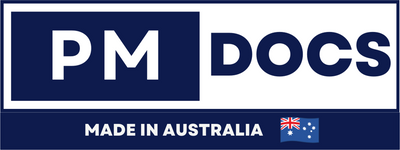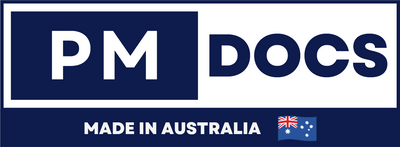Documenting Audit Findings: Step-By-Step Guide For Australia
Introduction
Conducting audits is a crucial part of maintaining transparency and accountability within any organization. Properly documenting audit findings is essential to ensure that the audit process is effective and actionable. In this guide, we'll explore how to document audit findings using AU templates, providing you with a structured approach to enhance your audit reporting.Before diving into templates, it's important to understand the basic structure of an audit report. A well-organized audit report format typically includes several key components that guide the reader through the audit process and its findings.

Basic Structure Of An Audit Report
1. Title Page
The title page sets the stage for the audit report. It should clearly state the title of the report, the name of the auditor, the date of the report, and the audit period. This information helps in identifying the report and provides context about the time frame of the audit. Including the organization’s name and logo can also lend a professional touch and helps in establishing the document's authenticity.
2. Table of Contents
The table of contents is an essential part of the audit report as it helps readers easily navigate the document. This section should list all the major headings and subheadings, along with their corresponding page numbers. A well-organized table of contents enables stakeholders to quickly locate specific sections of interest, making it easier to refer back to important findings and recommendations.
3. Executive Summary
The executive summary provides a brief overview of the audit's purpose, scope, and key findings. It should capture the essence of the audit in a concise manner, highlighting the most critical issues discovered during the audit. This section is particularly useful for stakeholders who may not have the time to read the entire report but need to understand the main outcomes and implications of the audit.
4. Introduction
The introduction section offers background information about the audit, including its objectives and the methodology used. Here, auditors can set the context by explaining why the audit was conducted, what areas were covered, and the standards or guidelines that were followed. This section should also outline the limitations of the audit, if any, to manage expectations regarding the findings.
5. Findings
The findings section is a detailed account of the audit findings, including evidence and analysis. This part of the report should be organized logically, often by themes or areas audited, and provide a thorough explanation of each finding. The use of subheadings and bullet points can enhance readability. Each finding should be supported by evidence, such as data, observations, or documentation, to substantiate the auditor's conclusions.
6. Recommendations
Recommendations are suggestions for improvement based on the findings. This section should provide actionable steps that the organization can take to address the issues identified during the audit. Each recommendation should be specific, measurable, realistic, and time-bound, making it easier for stakeholders to implement changes. Grouping recommendations by priority can also help in focusing efforts on the most critical areas first.
7. Conclusion
The conclusion offers a summary of the audit's outcomes and any final thoughts. It should recap the main findings and recommendations, highlighting their significance for the organization. This section can also include any observations from the auditor regarding the audit process itself or the response from the organization during the audit.
8. Appendices
Appendices contain additional information or documentation that supports the audit findings. This can include raw data, detailed analysis, charts, and any other relevant documents that provide further evidence or context to the findings. Appendices help keep the main body of the report concise while still providing stakeholders with access to comprehensive information.
The Importance Of Documenting Audit Findings
Documenting audit findings is not just a formality; it is a fundamental part of the audit process. Proper documentation ensures that the audit is not only effective but also serves as a tool for continuous improvement and accountability within the organization.
1. Findings are Clear
Clearly documented findings help stakeholders understand the issues identified during the audit. Clarity in documentation ensures that the message is conveyed without ambiguity, making it easier for stakeholders to grasp the significance of the findings. When findings are presented clearly, it reduces the chances of misinterpretation and facilitates a more straightforward implementation of recommendations.
2. Accountability is Maintained
Documentation holds parties accountable for addressing the identified issues. By clearly outlining who is responsible for each part of the process, organizations can ensure that necessary actions are taken to resolve issues. This accountability framework can also be used to track progress and ensure that changes are made in a timely manner.
3. Improvements are Encouraged
With clear recommendations, organizations can take actionable steps to improve their processes. Documentation of audit findings serves as a roadmap for positive change, guiding organizations on how to enhance their operations and mitigate risks. This proactive approach can lead to more efficient processes and a stronger organizational structure.
4. Future Audits are Informed
Past audit documentation serves as a valuable reference for future audits. By maintaining comprehensive records, organizations can identify patterns, track improvements, and anticipate potential challenges in subsequent audits. This historical data can also help in refining audit methodologies and focusing on areas that require more attention.
Using AU Templates For Audit Findings
AU templates are pre-designed formats that help auditors document findings efficiently and consistently. These templates ensure that all necessary information is captured and presented in a clear, organized manner, enhancing the overall quality and effectiveness of audit reports.
1. Audit Checklist Template
An audit checklist template is a useful tool for ensuring that all aspects of the audit are covered. It includes a list of areas to be audited, along with specific criteria or questions to address. This helps auditors stay focused and organized during the audit process. By using a checklist, auditors can systematically verify that no critical components are overlooked, ensuring a comprehensive evaluation of the organization’s operations.
2. Findings Section Template
The findings section is the heart of the audit report. When using an AU template, consider including several key components to ensure thorough documentation.
3. Finding Title
A brief, descriptive title for each finding is essential for clarity and reference. The title should capture the essence of the issue in a few words, making it easy for stakeholders to identify and discuss specific findings. A well-crafted title sets the tone for the detailed explanation that follows.
4. Description
A detailed explanation of the finding, including the context and evidence, is crucial for understanding the issue. This section should provide a narrative that explains what was discovered, how it was discovered, and why it is significant. By including evidence such as data, observations, or documentation, the auditor can substantiate the finding and provide a solid basis for any recommendations.
5. Impact
An analysis of the finding's impact on the organization helps stakeholders understand the potential consequences of the issue. This analysis should consider both the short-term and long-term effects, as well as any risks associated with the finding. By articulating the impact, auditors can help prioritize issues based on their significance.
6. Root Cause
Identification of the underlying cause of the finding is a critical step in developing effective recommendations. By understanding the root cause, organizations can address the issue at its source, rather than just treating the symptoms. This section should explore why the issue occurred and what factors contributed to its existence.
7. Recommendation
Suggested actions to address the finding should be specific, measurable, and realistic. Recommendations should provide clear steps that the organization can take to resolve the issue and prevent its recurrence. By offering practical solutions, auditors can facilitate improvements and enhance organizational performance.
8. Recommendations Template
The recommendations section should provide actionable steps to address the audit findings. Each recommendation should be specific, measurable, and realistic, making it easier for the organization to implement changes. Using bullet points can enhance clarity and help stakeholders quickly grasp the suggested actions. Grouping recommendations by priority or category can also guide the organization in focusing its efforts on the most critical areas first.
9. Conclusion Template
The conclusion section summarizes the audit's overall outcomes and highlights the most critical findings and recommendations. This section can also include any final thoughts or observations from the auditor, offering insights into the audit process and the organization’s response to the findings. A well-crafted conclusion provides a clear sense of closure and reinforces the importance of the audit’s outcomes.
Best Practices For Documenting Audit Findings
To ensure your audit documentation is effective, consider the following best practices. These practices can help enhance the clarity, credibility, and impact of your audit reports.
1. Be Clear and Concise
Avoid jargon and technical language that may confuse readers. Use plain language to ensure that your findings and recommendations are easily understood by all stakeholders. Clarity in communication is crucial for ensuring that the audit’s outcomes are acted upon and lead to meaningful improvements.
2. Use Visuals
Where possible, incorporate visuals such as charts, graphs, or tables to present data clearly and concisely. Visuals can help emphasize key points and make complex information more digestible. By enhancing the readability of the report, visuals can engage stakeholders more effectively and facilitate better decision-making.
3. Prioritize Findings
Not all findings are created equal. Prioritize findings based on their impact and urgency. This helps stakeholders focus on addressing the most critical issues first, ensuring that resources are allocated effectively and improvements are made where they are needed most. By prioritizing findings, auditors can guide organizations in making strategic decisions that enhance overall performance.
4. Provide Evidence
Back up your findings with evidence. Whether it's data, observations, or documentation, providing evidence lends credibility to your audit report. Detailed evidence supports the auditor’s conclusions and recommendations, making it easier for stakeholders to accept and act upon the findings. A robust evidence base enhances the report’s reliability and persuasiveness.
5. Follow Up
After the audit report is submitted, follow up with stakeholders to ensure that recommendations are being implemented. This demonstrates a commitment to continuous improvement and accountability. By maintaining communication and offering support, auditors can help organizations overcome challenges and achieve the desired outcomes.
Conclusion
Documenting audit findings using AU templates streamlines the audit process and enhances the clarity and effectiveness of your reports. By following the structured approach outlined in this guide, you can ensure that your audit findings are well-documented, actionable, and valuable for driving organizational improvements. Remember, the goal of an audit is not only to identify issues but also to provide a roadmap for positive change. With the right templates and practices in place, your audit reports can become powerful tools for driving progress within your organization. As you implement these strategies, you will contribute to a culture of accountability and continuous improvement, ultimately enhancing the organization's overall performance and success.




